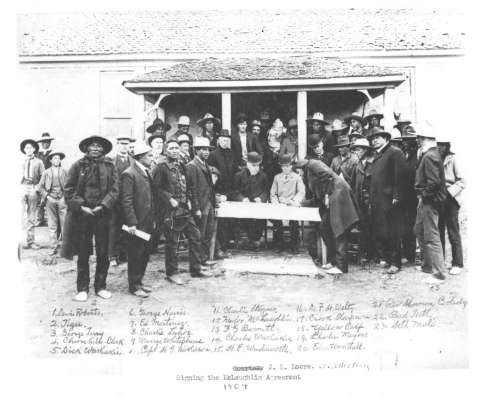Celebrating Native American Heritage Month
By Kylie McCormick
Last Saturday, I led a conversation about race at the Campbell County Library in Gillette, Wyo. The conversation occurred in the context of a three-part workshop focusing on the preconditions of the Holocaust and the bystanders during the genocide, but conversations like this often reach beyond that specific history and into our own personal experiences. I was fortunate to have a generous audience, among them one Native American man who shared his agreement with me about the intrinsic value in connecting with people who share something with you—like a culture, language or history.
This month is Native American Heritage Month. It seems to me, when I look at the history of these national celebrations—Black History Month, for example—I find the people who started them did so because they saw value in celebrating a group’s distinct cultures and history. The idea behind Native American Heritage Month started in 1912 when Dr. Arthur C. Parker of the Seneca Nation convinced the Boy Scouts of America to celebrate a “First Americans” Day. Soon, the idea of celebrating all their diverse cultures and shared history gained support among other American Indians. In 1912, the Congress of the American Indian Association began petitioning the federal government for the day to be nationally recognized. Finally, in 1990, President George H.W. Bush designated November to be National Native American Heritage Month, and since then each president as kept the tradition.

This year National Native American History Month appears to be quietly celebrated in Wyoming. The Sweetwater County Historical Museum marked the month with the publication of Dick Blust’s article, “Three Photos, a Murder and a Murky Outcome” on our site. The striking image of Shoshone woman Kate Enos sparked further research and the article it inspired brings to light the individuals caught up in the messy inter-tribal politics during and after the 1905 sale of huge amounts of Wind River Reservation land. Events this year at the Plains Indian Museum at the Center of the West in Cody, Wyo., include personal tours with assistant curator Hunter Old Elk, a member of the Crow & Yakama nations and an art historian.
Since the 2017 passage of Wyoming’s Indian Education for All act, our historians, educators, politicians and others have collaborated with members of the Shoshone and Arapaho tribes to produce state standards, district curriculums, traveling exhibits and more than 20 articles on WyoHistory.org. Rob Black with the Wyoming Department of Education curated a list of Indian Education resources, which features many of the projects taken on since 2017 (including ours). In 2018, the Wyoming Humanities Council’s Treaties Matter exhibits traveled across the state.
I grew up in Wyoming, and must confess I didn’t receive much formal education about the history of Native Americans in my home state or their modern-day culture. I am thankful that the last several years have brought efforts from across the state to change this fact for kids growing up in Wyoming today. I am grateful that most of these resources are available to all of us—giving me the chance to learn what I missed out on in school.
Kylie McCormick is an assistant editor at WyoHistory.org.
- For much more, see Indigenous People in Wyoming and the West.
